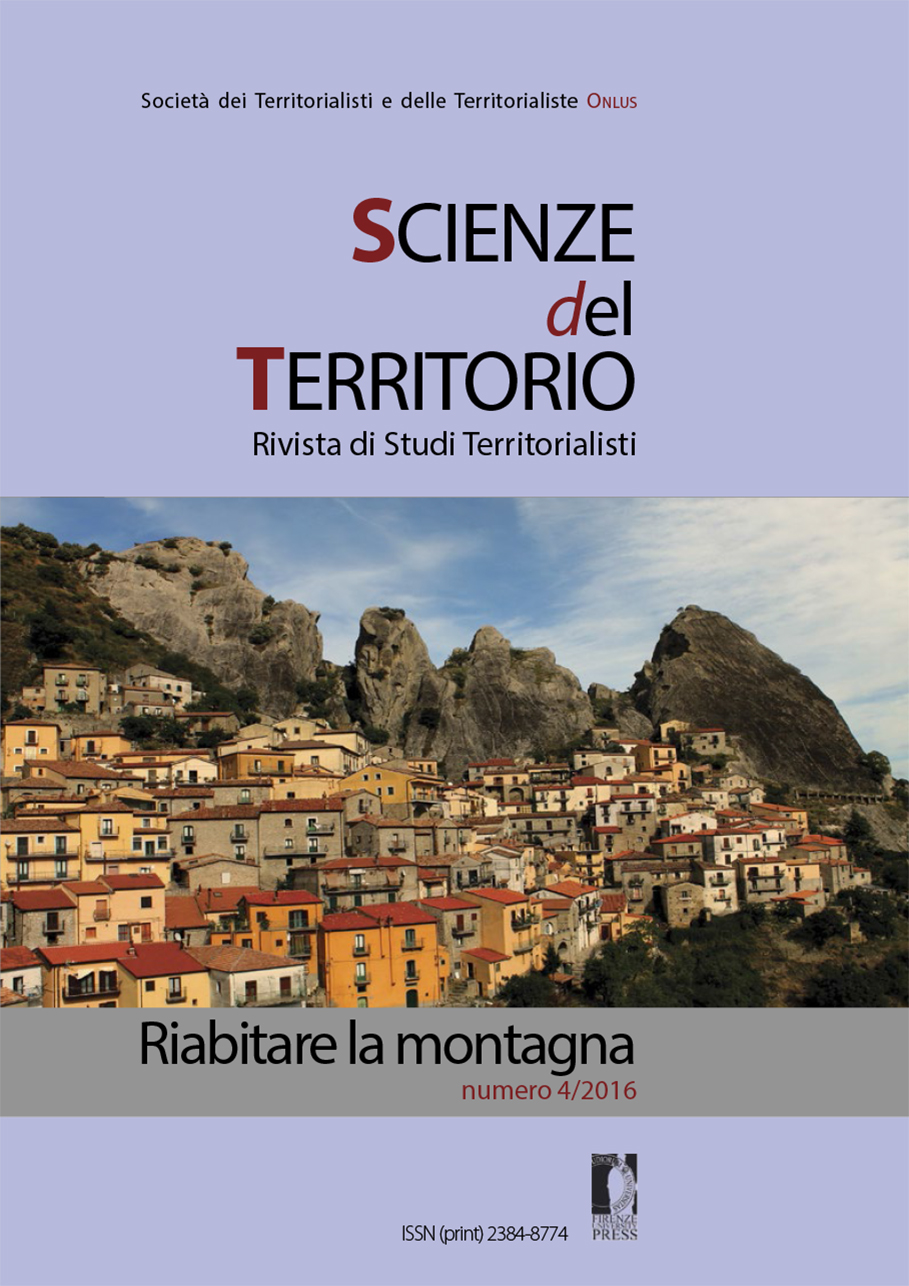Ecomusei e geoturismo nell’Abruzzo montano: dalle esperienze locali a una progettazione allargata
Published 2016-11-28
Keywords
- ecomuseo,
- geoturismo,
- sviluppo sostenibile,
- biodiversità
How to Cite
Abstract
Abruzzo is marked by a great geodiversity, a high percentage of mountain areas and a rich fauna and flora, features which led to the establishment of numerous natural parks and reserves throughout the region. Ecomuseums live in close symbiosis with these areas, and ease the fruition of such complex institutions. An example is the Majella National Park, which includes the Ecomuseum of the Western Majella and the Ecomuseum at the Paleolithic site of the Giumentina Valley: the former a district with its own specificities, the latter with a main thematic, ethno-graphic and historical-archaeological focus. This structure promotes a global approach to territories, a variety of educational offers, opening a wide space to research, and a variety of high-quality geo-tourism proposals. Sustainable tourism and a holistic reading of territories are expressed in various thematic projects aimed at protecting biodiversity, restoring and enhancing disused buildings, defining thematic itineraries suitable for a multi-level fruition. Integrated into national and European networks, natural parks and ecomuseums work in partnership with institutions and foundations on a regular base; this entrepreneurship, though, often sided by self-organised bottom-up processes, does not exclude but rather encourages participation in the local communities which, cooperating with institution and regaining a place consciousness, can play a proactive role in self-sustainable development.


